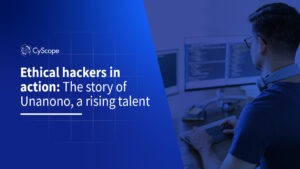In the world of cybersecurity, every click can open the doors to a labyrinth of vulnerabilities and solutions. What drives someone to become a bug hunter? How does one embark on this thrilling journey? Today, in this new blog, we delve into the fascinating story of a community member, a hacker who goes by the pseudonym “p4z4” and has navigated the complex paths of bug bounty hunting for over two years. Join us for the full interview!
AF: Tell us about your experience as a hacker and how you entered the bug bounty world?
P4z4: My journey into the bug bounty world began approximately two years ago, under the mentorship of a distinguished colleague in the field of information security, Yessi, an experienced bug hunter from Mexico. She introduced me to this field, sharing her invaluable knowledge on vulnerabilities and detection strategies.
From that moment on, my commitment to learning was unwavering. I immersed myself in numerous manuals and meticulously analyzed reports of several bug bounty plaftorms e, seeking to understand the most effective trends and techniques in vulnerability identification. Then, I took a bold step by exploring the OpenBugBounty platform, despite the absence of monetary rewards. It was here that I encountered my first revelatory report. Inspired by the success of another researcher who had discovered a flaw in a search function, I set out to replicate their steps across various search forms until I found a vulnerable site. The satisfaction of reporting and resolving my first bug was unparalleled, driving me to expand my horizons across multiple bug bounty platforms.
AF: Could you explain your methodology as a bug hunter? How do you approach vulnerability hunting?
P4z4: My dedication to discovering vulnerabilities is challenged by the constraints of limited time and resources in my environment. Living in an area with restricted internet access, I am compelled to maximize every moment of my search. Although this scenario presents certain disadvantages, I have turned these limitations into opportunities to develop a unique and effective work methodology.
I am aware of my limitations; thus, I focus on thoroughly understanding each website I am tasked to review. I exploit all available features, testing diverse scenarios and user interactions to assess their security. My approach centers on identifying how the site can be manipulated, often revealing potential vulnerabilities overlooked by others. At times, I have even simulated user interactions, such as account creation or product purchases, to thoroughly explore the site’s infrastructure and uncover weaknesses.
AF: How do you develop your testing techniques to identify vulnerabilities in systems or applications?
P4z4: I prioritize manual testing in approximately 95% of cases. Although I recognize the effectiveness of automated tools such as Nmap, fuzzing, and WaybackURL, I prefer to chart my own path toward vulnerability detection. My choice to predominantly avoid automated tools is not due to their lack of quality, but rather stems from my inclination to explore less traveled terrain.
Lately, I’ve begun familiarizing myself with Nuclei, recognizing the importance of staying updated on tools available in the cybersecurity field. However, my preference for manual testing remains strong, as I believe it’s where I can leverage my best skills and yield more significant outcomes.
AF: Staying updated in the cybersecurity realm is crucial. What’s your approach to staying informed about the latest trends and techniques?
P4z4: My approach has always been to seek out simple yet lucrative vulnerabilities, such as IDORs, which are not only easy to find but also offer substantial rewards. In my experience, as technology advances, discovering more complex vulnerabilities like SQL injections, RCE, TTI, or XML injections has become more challenging due to the increased use of WAFs. However, I view these challenges as opportunities to shine. Successfully overcoming WAF defenses and identifying significant vulnerabilities merits global recognition. I adopted this approach after learning from the experience of a successful bug hunter who reached the million-dollar mark in rewards.
AF: What specific aspects of CyScope attract you the most, and why?
P4z4: CyScope captivates me with the exceptional skill of its triage team, who not only grasp the intricacies of the hacker’s perspective but also exhibit kindness and willingness to understand each vulnerability. The seamless and efficient communication I maintain with them is unparalleled in other bug bounty platforms. Furthermore, the dynamic and frequent updates to their website objectives and features reflect a genuine commitment to excellence and innovation, which continually motivates me to remain active on this platform.
AF: And finally, what advice would you give to someone who is interested in getting started in the world of bug bounty?
P4z4: An invaluable piece of advice is to immerse yourself in reading a wide variety of vulnerability reports and, more importantly, replicate those cases in practice. Begin by studying numerous write-ups, assimilating every detail, and then applying that knowledge to search for similar vulnerabilities in systems you have access to. Additionally, do not underestimate the importance of having a solid theoretical foundation, and if you possess programming skills, consider this as an additional advantage. However, remember that more is not always better; focus on mastering a specific technique before moving on to the next one, as attempting to cover too much ground can result in superficial understanding rather than complete mastery.
Join CyScope’s bug bounty community and unlock a world of opportunities to refine your cybersecurity skills!
We offer exceptional communication and a profound understanding of the intricacies of ethical hacking. Moreover, our platform is continuously updated to provide you with fresh and exciting challenges.





